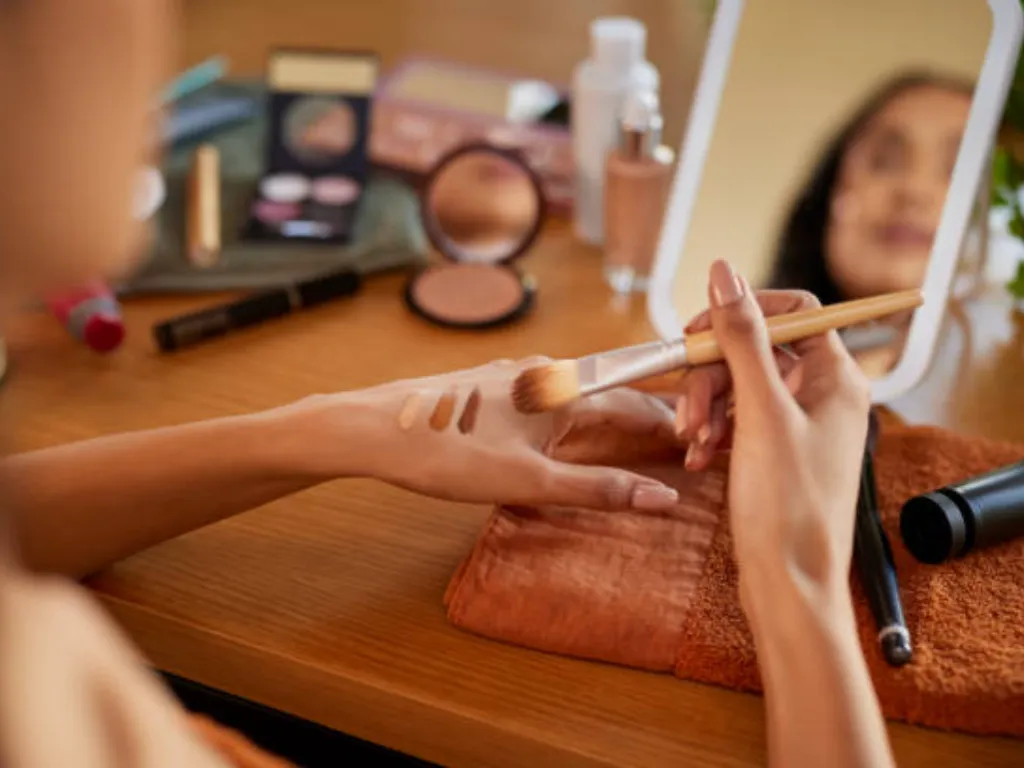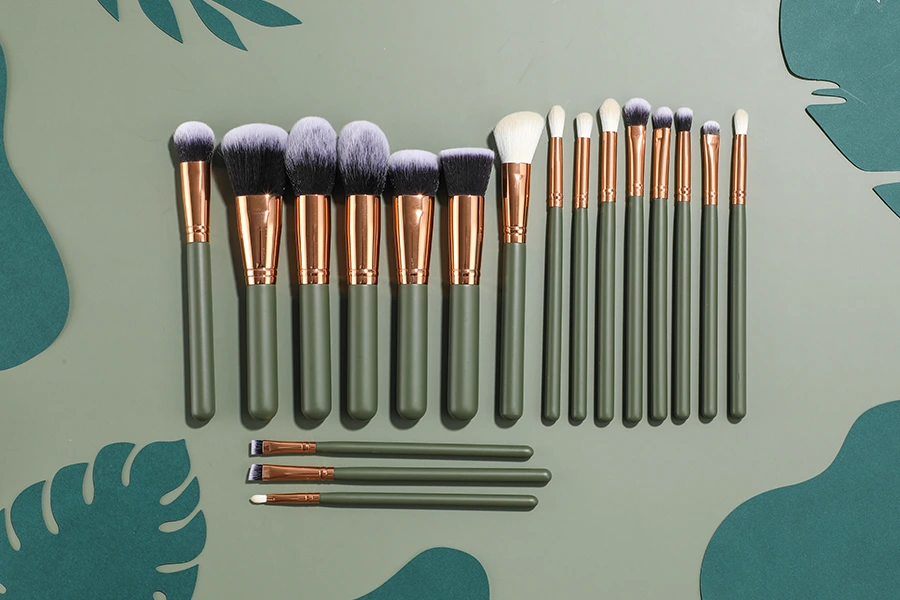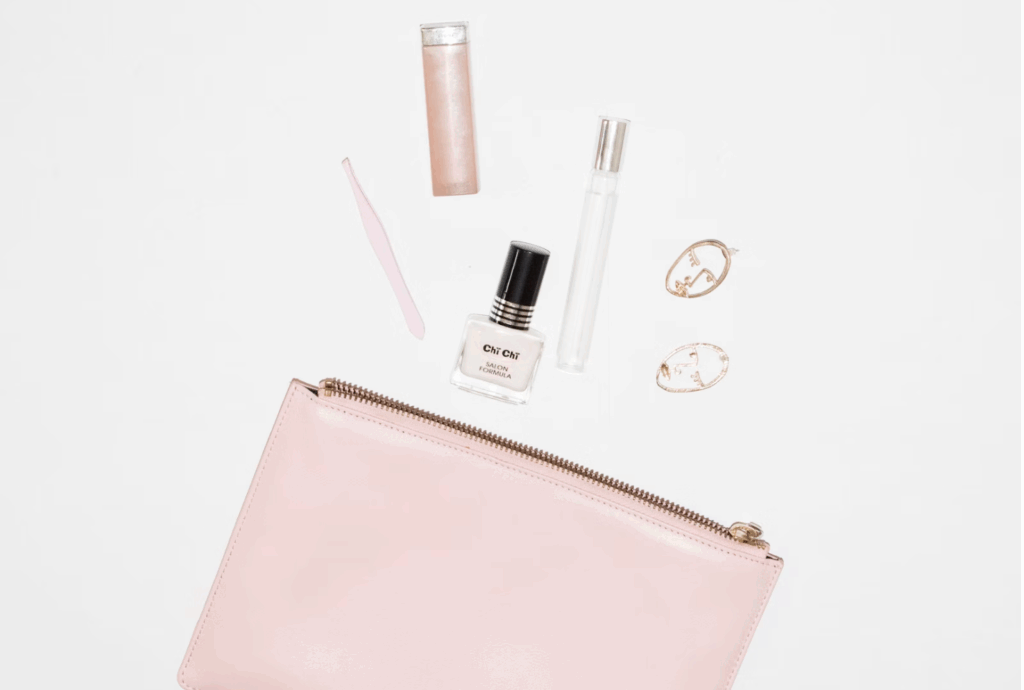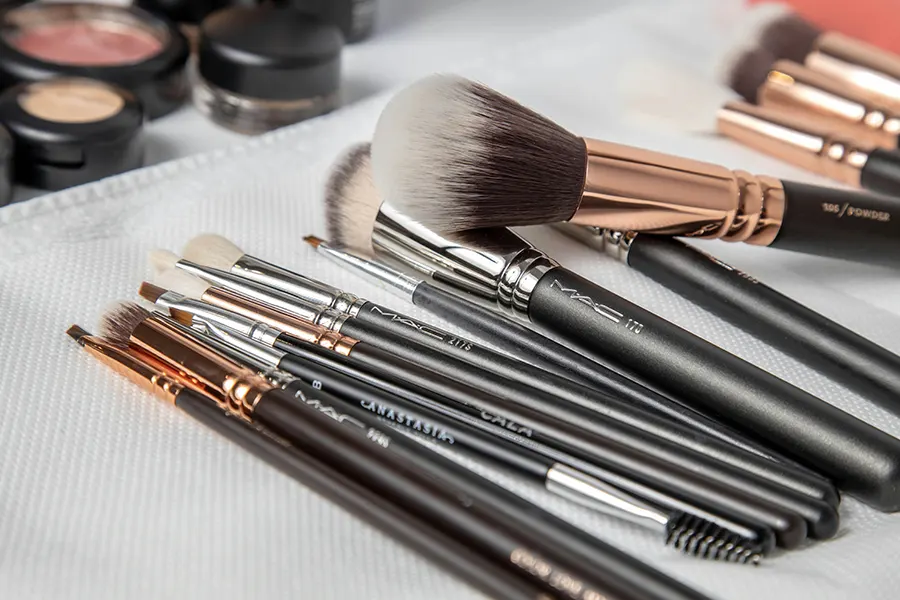Synthetic fibers are now at the heart of modern makeup brush design. They give manufacturers steady quality, easy upkeep, and ethical options without losing performance.
Whether you’re sourcing for a beauty brand or simply curious about how brushes are made, knowing the basics of these fibers can be eye-opening. Dans cet article, we’ll walk through the main types of synthetic fibers and how they’re used.
What Are Synthetic Fibers
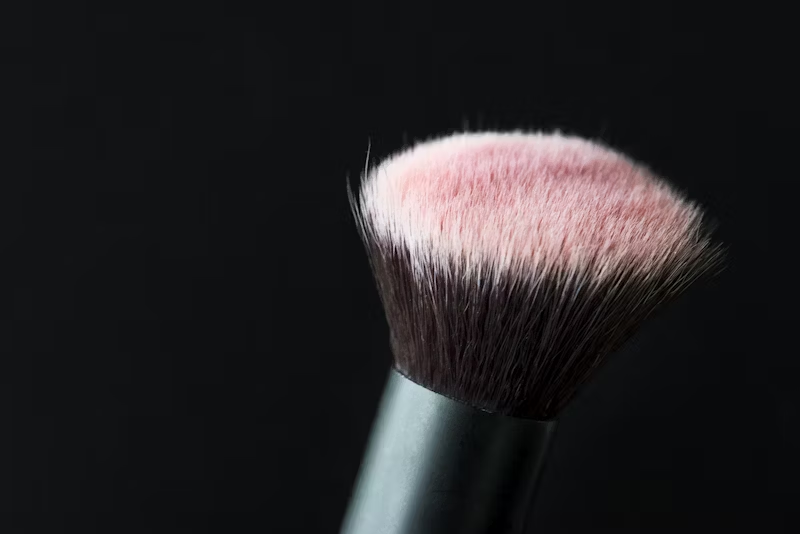
Definition of Synthetic Fibers
Synthetic fibers are man-made filaments produced from polymers rather than animal hair. In the beauty industry, the most common base materials are nylon, polyester, and newer bio-based polymers. These fibers are drawn into very fine threads, sometimes thinner than a human hair (about 50–70 microns), then bundled to form bristles.
Key Benefits of Synthetic Fibers
Modern makeup brushes use synthetic fibers for several reasons:
Design Flexibility: Manufacturers can shape each filament to be round, tapered or hollow, adjusting softness and product pickup. This level of control is not possible with natural hair.
Reliable Texture and Uniformity: Fibers are consistent in diameter and structure, providing predictable performance.
Better Product Retention: Synthetic bristles absorb less liquid or cream product, so more makeup goes on the skin rather than being wasted in the brush.
Easy Cleaning and Hygiene: Brushes dry faster and are easier to clean, which reduces bacteria build-up and extends their lifespan.
Common Types of Synthetic Fibers
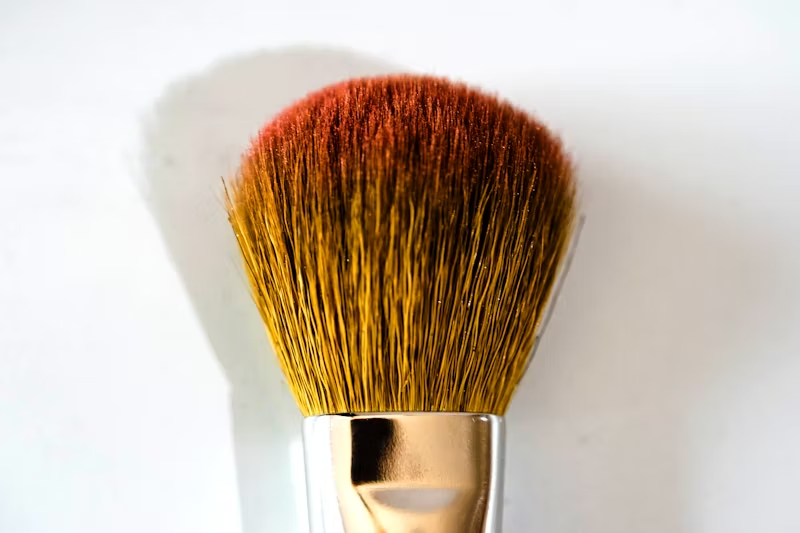
Nylon (Polyamide)
Nylon has been a staple in brushes since the 1940s. For your precision work, like eyebrows or eyeliner, nylon offers firm yet flexible bristles with a smooth surface. Average fiber diameters range from 0.07 à 0.12 mm, giving you control without excessive bending. Be aware that if the tips are not polished properly, nylon can feel slightly scratchy, so always check that your supplier uses quality tip-polishing techniques.
Cabon (Refined Polyester)
Taklon is a type of polyester treated to mimic natural sable hair. It can be extremely fine, around 0.05 mm, which gives you a silky touch perfect for blending eyeshadow or applying liquid foundation. Many brands you may work with choose Taklon because it performs like animal hair while remaining vegan-friendly. Using Taklon brushes can make delicate blending much easier and more consistent.
PBT (Polybutylene Terephthalate)
PBT is a sturdier polyester that can handle repeated cleaning and high temperatures. If you are selecting brushes for professional kits that will be sanitized frequently, PBT is a strong candidate. These fibers can maintain their shape for over 200 washes when processed correctly, meaning your brushes will stay reliable and durable over time.
Micro-Crimped or Textured Fibers
Some modern brushes feature micro-crimped fibers. Small crimps along the strands increase the surface area, allowing your brush to pick up and hold more powder. Tests by reputable suppliers show these fibers can improve powder retention by 15–20% compared with straight fibers of the same diameter. They are ideal if you want even application with blush, Poudres de finition, or bronzers.
How Different Synthetic Fibers Affect Brush Performance
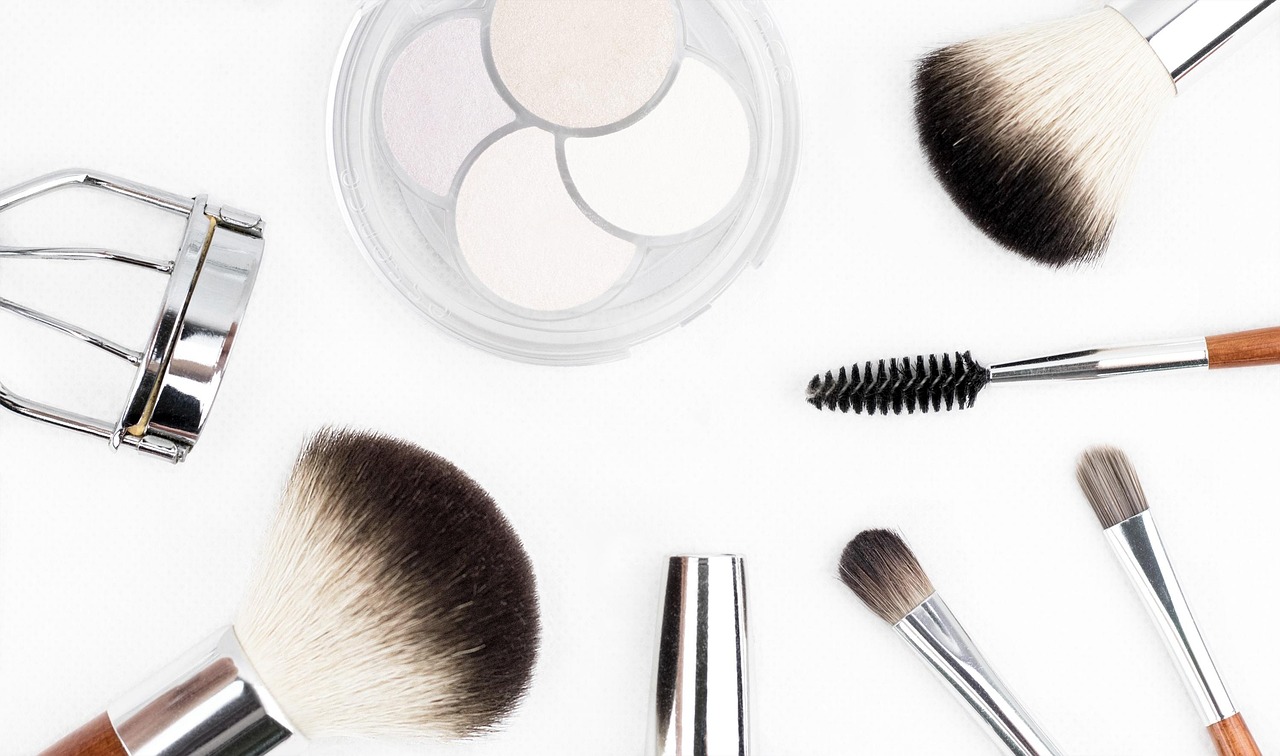
Cabon
Texture & Feel: Taklon fibers are smooth and soft, closely mimicking the feel of natural hair. They glide easily across the skin, making them comfortable for sensitive areas such as under the eyes or along the cheekbones.
Performance: Taklon performs exceptionally well with liquid and cream products. It allows seamless blending and moderate product retention, ensuring that makeup goes on evenly without streaking or clumping.
Mieux pour: Fondation, correcteur, Crème Blush, and blending brushes where a gentle touch and smooth finish are essential.
Nylon
Texture & Feel: Nylon fibers are firmer and slightly more resilient than Taklon, offering good spring and structure. They feel smooth but maintain control, which is important for precision work.
Performance: Nylon holds powders effectively, especially loose pigments, and releases them in a controlled manner. Its stiffness allows you to create sharp lines and defined edges while minimizing fallout.
Mieux pour: Eyebrow brushes, eyeliner brushes, and other precision tools that require accuracy and stability.
PBT (Polybutylene Terephthalate)
Texture & Feel: PBT fibers are smooth, dense, and highly durable. They retain their shape after repeated washing and resist fraying or splitting, making them suitable for professional settings.
Performance: PBT is excellent for both liquid and powder products. It maintains consistent performance over time, can withstand heat during cleaning, and releases product evenly. Its durability ensures long-term reliability.
Mieux pour: All-purpose brushes, brosses de fond de teint, powder brushes, and any tool intended for repeated professional use.
Micro-Crimped or Textured Fibers
Texture & Feel: These fibers feature subtle crimps or textures along the strands, giving them slightly more grip compared with straight fibers. They feel soft yet structured, offering a balance between comfort and product control.
Performance: Crimped fibers increase surface area, allowing the brush to pick up and hold more powder while distributing it evenly. This reduces waste and provides smooth, consistent coverage.
Mieux pour: Powder brushes, blush brushes, bronzeurs, and any application requiring efficient product pickup and even application.
Caring for Brushes Made from Different Fibers
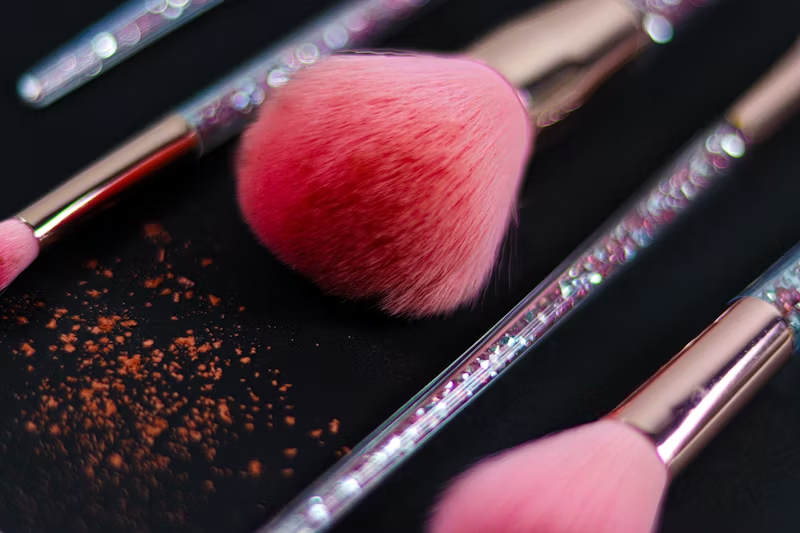
Taking proper care of your synthetic brushes helps maximize their lifespan and get better performance. Each fiber type has its own maintenance needs, so focusing on the basics will give you reliable results.
- Cabon: Use mild soap or a brush cleanser with lukewarm water. Swirl gently without pressing hard, then reshape and dry flat or with bristles pointing down. This prevents water from loosening the ferrule and keeps the fibers soft.
- Nylon: Clean with lukewarm water and a gentle cleanser to remove residue. These fibers can handle slightly firmer cleaning, but avoid twisting the tips. Reshape after rinsing to maintain precision.
- PBT (Polybutylene Terephthalate): Highly durable fibers that tolerate frequent cleaning. Use warm water and mild detergent, then dry flat or downward to protect the glue at the base. Regular care keeps them in shape for professional use.
- Micro-Crimped or Textured Fibers: Handle carefully to preserve their structure. Wash with gentle soap and lukewarm water, massaging lightly. Avoid heavy pressure to prevent flattening the crimps. Dry naturally after reshaping.
- General Tip for All Fibers: Do not soak brushes in water for long periods. Avoid hot water or harsh chemicals that weaken fibers. Store brushes upright or in a case to prevent deformation and bacterial buildup.
Réflexions finales
Synthetic fibers have reshaped what makeup brushes can do, giving manufacturers reliable quality and consumers consistent results. By understanding how each fiber type feels and performs, you can make smarter sourcing decisions and create brushes that truly fit your brand’s goals.
Looking for well-designed synthetic fiber brushes that balance performance and value? Check out BS-Mall Beauty’s selection of eco-friendly makeup brushes, soft blending brushes, and high-quality eye brushes. BS-MALL BEAUTH offers a versatile range of options to help you source with confidence and elevate your product line.
FAQ
1. De quoi sont faits les pinceaux de maquillage synthétiques?
Synthetic makeup brushes are typically crafted from man-made materials such as nylon, polyester, or Taklon fibers. These materials are designed to mimic the performance of natural hair while being cruelty-free and more durable.
2. Are synthetic brushes suitable for liquid and cream products?
Oui, synthetic brushes are ideal for applying liquid and cream products like foundation and concealer. Their non-porous bristles prevent excessive product absorption, ensuring a smooth and even application.
3. Are synthetic brushes suitable for sensitive skin?
Absolutely. Synthetic brushes are hypoallergenic and less likely to cause irritation compared to natural hair brushes, making them a great choice for individuals with sensitive skin or allergies.
4. How often should I clean my synthetic makeup brushes?
It’s recommended to clean your synthetic brushes at least once a week to remove product buildup and bacteria. Use a gentle dish soap or brush cleanser, rinse thoroughly, remodeler les poils, and let them air dry.
5. How can I tell if my synthetic brush is of good quality?
UN high-quality synthetic makeup brush should have soft, densely packed bristles that don’t shed easily. The handle should be sturdy, and the ferrule (metal part) should be securely attached. En plus, the bristles should spring back to their original shape after cleaning.













